Blog to make science clearer and easier! Asks are open so feel free to ask questions
Last active 4 hours ago
Don't wanna be here? Send us removal request.
Text
its been p common knowledge for decades that light pollution can be massively reduced by just putting shades on streetlamps, and that doing that would save energy, help wildlife, and let us see the stars better, but are society says if u wanna change any minor little tiny thing u gotta dedicate ur whole life to campaigning for it and this is a good ways down the list of priorities for most ppl, so instead i gotta walk past newly-installed streetlamps that are just dumb glass globes that use half their electricity to blast half their light directly into the sky where it does only bad things for no reason and think "we should overthrow the government"
106K notes
·
View notes
Text

129K notes
·
View notes
Text
DID EARTH JUST GOT A SECOND MOON??
Blog#439
Wednesday, September 25th, 2024.
Welcome back,
This month, Earth will grab itself a second moon in the form of the tiny asteroid 2024 PT5.
Unlike the moon, Earth's primary companion which has accompanied our planet for around 4 billion years, this "new mini-moon" will stick around for just two months before it heads back to its home in an asteroid belt trailing our planet and orbiting the sun.
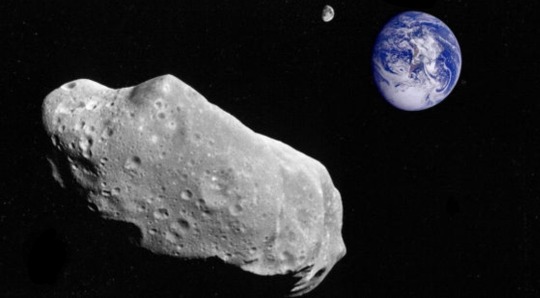
A team of scientists well-versed in the study of so-called "mini-moon events " identified the forthcoming gravitational capture event. They spotted the peculiar dynamic properties of 2024 PT5 as they routinely monitored newly discovered objects for potentially interesting behavior.
"The object that is going to pay us a visit belongs to the Arjuna asteroid belt, a secondary asteroid belt made of space rocks that follow orbits very similar to that of Earth at an average distance to the sun of about 93 million miles (150 million kilometers), research lead author and Universidad Complutense de Madrid professor Carlos de la Fuente Marcos told Space.com.

"Objects in the Arjuna asteroid belt are part of the near-Earth object population of asteroids and comets."
Marcos explained that some of these objects in the Arjuna asteroid belt can approach Earth at a close range of around 2.8 million miles (4.5 million km) and at low velocities of around 2,200 miles per hour (3,540 km/h).
"Under these conditions, the geocentric energy of the object may grow negative, and the object may become a temporary moon of Earth. This particular object will undergo this process starting next week and for about two months," he added. "It will not follow a full orbit around Earth.
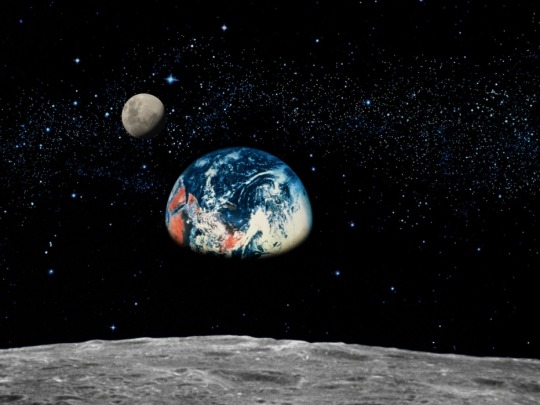
"You may say that if a true satellite is like a customer buying goods inside a store, objects like 2024 PT5 are window shoppers."
Mini-moon events come in two flavors. The first are long episodes during which the asteroid completes one or more revolutions about our planet, with these gravitational engagements lasting one or more years.

The second type of episodes are short engagements in which the small body does not complete one full revolution. These temporary captures can last just days, weeks or even a few months.
Marcos explained that in order to become a mini-moon, an incoming body has to approach Earth at a close range of around 2.8 million miles (4.5 million km) and slowly at about 2,200 mph (3,540 km/h).
Originally published on https://www.space.com
COMING UP!!
(Wednesday, September 28th, 2024)
"CAN SUPERMASSIVE BLACK HOLES MERGE??"
71 notes
·
View notes
Photo

Melting aluminum with an electromagnet.
521K notes
·
View notes
Text

Two moons! TWO MOONS!!! One for me! One for you! Two moons!! x
253 notes
·
View notes
Text

In their defence, a lot of it is sand.
40K notes
·
View notes
Text
WHAT IS THE COLDEST PLANET IN OUR SOLAR SYSTEM??
Blog#418
Saturday, July 13th, 2024.
Welcome back,
The planets in our Solar System are heated by the Sun. Here on Earth, we are about 100 million miles away from the Sun – a distance that provides the perfect temperature for life.
You might think, then, that the coldest planet in the Solar System would be Neptune, as it is the furthest away from the Sun’s warmth. Neptune is an incredible three billion miles away from the Sun.
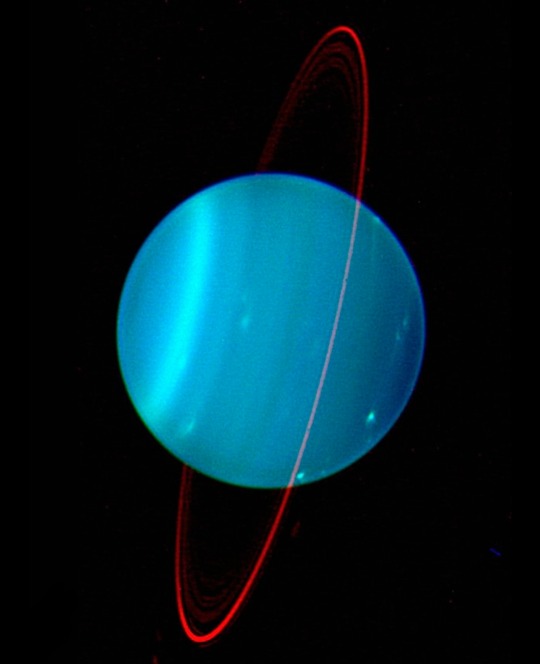
However, the coldest planet is not Neptune, but Uranus – even though Uranus is a billion miles closer to the Sun than Neptune. Uranus holds the record for the coldest temperature ever measured in the Solar System: a very chilly -224℃. The temperature on Neptune is still very cold, of course – usually around -214℃ – but Uranus beats that.
The reason why Uranus is so cold is nothing to do with its distance from the Sun.
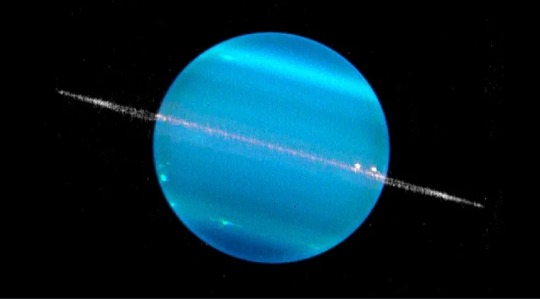
Billions of years ago, something big crashed into Uranus with so much force that it tipped the planet over onto its side. Uranus still rolls around the Sun on its side today. The impact of the crash also let some of the heat that was trapped inside Uranus escape.
The heat inside planets is left over from when they were formed. Planets are made when smaller chunks of rock smash together, building the full planet piece by piece over many millions of years.
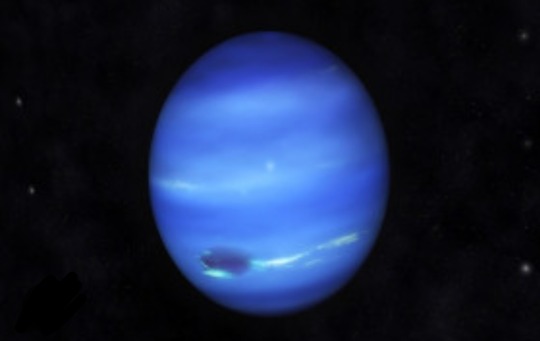
Every time these rocks smash together, the planet gains a little more heat. If you clap your hands together for a long time they will start to feel hot – the same thing happens with planets.
Neptune wasn’t hit by a huge asteroid like Uranus was, so it has been able to hold on to more of its heat.
You might also be surprised to learn that the closest planet to the Sun, Mercury, can also be extremely cold. While the side of Mercury facing the Sun is more than 400℃, the side facing away from the Sun is nearly -200℃.
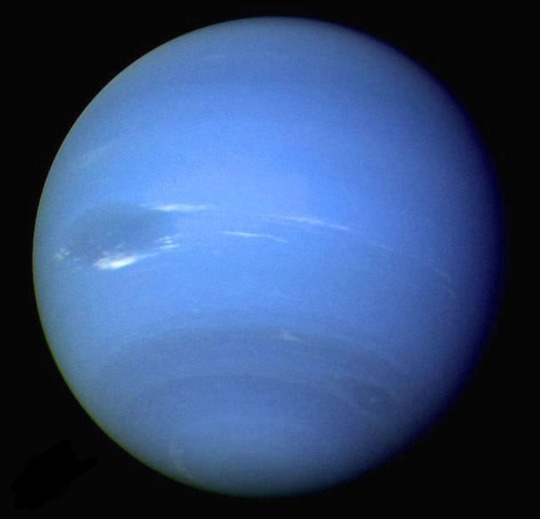
The reason for this is that Mercury does not have any atmosphere, unlike Earth. An atmosphere like ours acts like a blanket, holding heat in and spreading it all around. Because it does not have this blanket, the front side and the back side of Mercury can have very different temperatures.
For some nearby planets like Mars, we can send probes to study the atmosphere directly from the planet’s surface. However, we haven’t been able to do this for distant planets such as Neptune and Uranus.
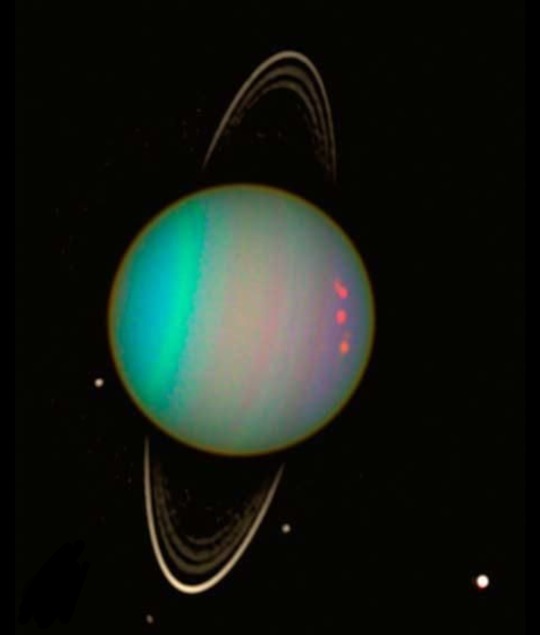
Instead, we have to work out how cold they are by measuring their temperature from here on Earth. We do this by studying the light from the planet, which can tell us the types of atoms and molecules which make up the planet’s atmosphere. This information lets us know exactly what the temperature of the planet is: the atoms and molecules act as a kind of temperature “fingerprint” for the planet.
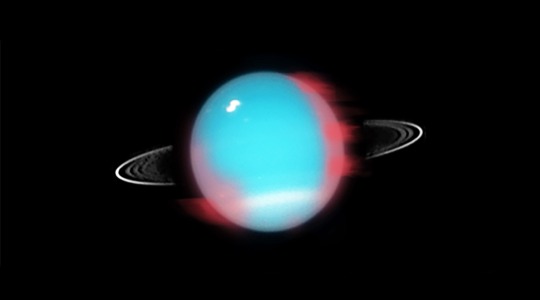
While these planets in our Solar System are incredibly cold, there are even chillier places in the universe. The coldest of all is the Boomerang Nebula, a cloud of dust and gas 30 million billion miles away from us. There, the temperature reaches -272℃.
Nothing in the Universe can be colder than -273℃, because at that temperature the tiny particles and atoms that everything is made of basically stop moving, and once that happens it’s impossible to go colder. This temperature is known as absolute zero. This means it is unlikely that we will ever find anywhere in the Universe colder than the Boomerang Nebula.
Originally published on https://www.hull.ac.uk
COMING UP!!
(Wednesday, July 17th, 2024)
"ARE WE SAFE FROM BLACK HOLES??"
128 notes
·
View notes
Text








Tree roots following the pattern of concrete footpaths
125K notes
·
View notes
Text
i learned that Scientists discovered sharks that are living in an active underwater volcano. Divers cannot investigate because they would get burns from the acidity and heat. (x)

122K notes
·
View notes
Text
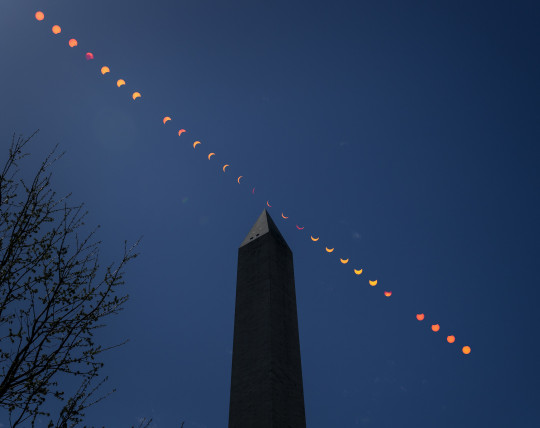
Follow, follow the Sun / And which way the wind blows / When this day is done 🎶 Today, April 8, 2024, the last total solar eclipse until 2045 crossed North America.
Make sure to follow us on Tumblr for your regular dose of space!
38K notes
·
View notes
Text
Someone captured the solar eclipse on an airplane
101K notes
·
View notes
Text
as a child being told "the moon controls the tides" with no additional explanation was like. oh okay. you want me to believe in magic? you're talking about magic right now? okay. fine
172K notes
·
View notes
Text
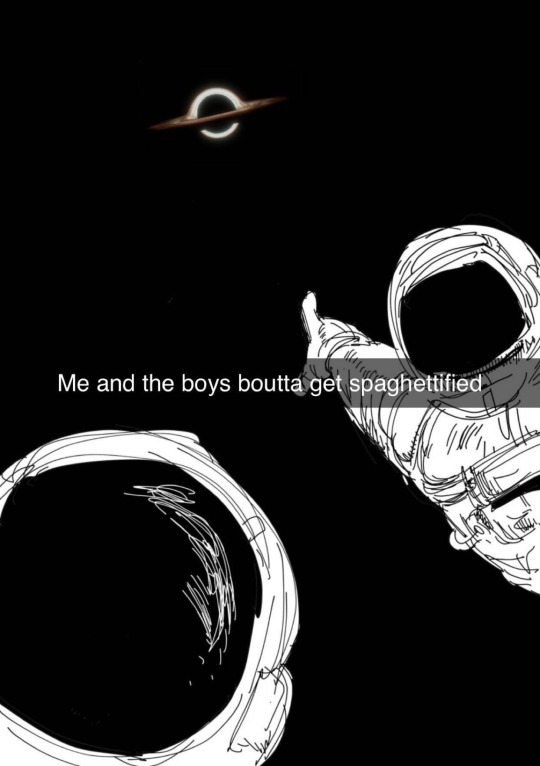
41K notes
·
View notes
Text
Hello! My name is Edmund and this is my science blog. Here i am talking about different topics from different fields of science, but mostly about physics because I major physics
Here are all my posts!
Geomagnetic storms
The Large Hadron Collider
Black Hole based on Doppler effect
#science#physics#astronomy#science blog#astronomy blog#astrophysics#astrophysics blog#physics blog#quantum mechanics#quantum physics#quantum physics blog
0 notes
Text
Did you know that Black Hole would look a little bit blue to the side because of the Doppler effect? (Image is making process of Black Hole(Gargantua) in Interstellar)
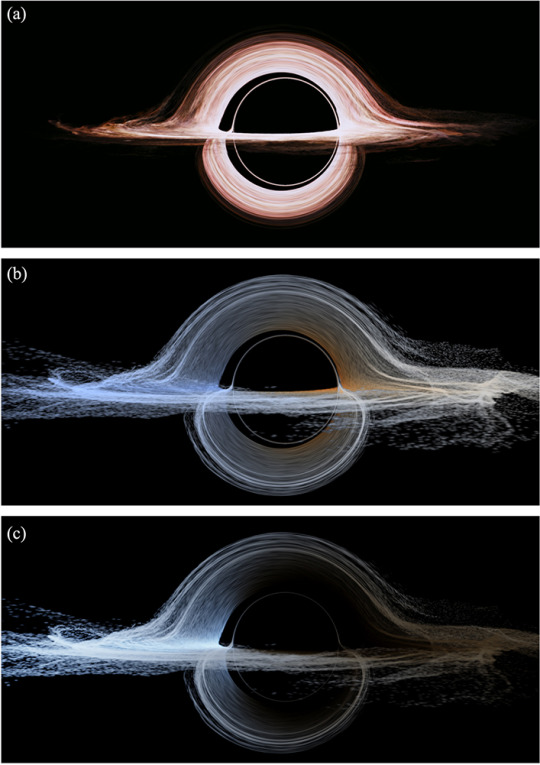
What is Doppler effect?
Doppler effect is basically what makes the sound louder or more quite depending on how far it is from you. If it is closer to you it has higher pitch frequency, further from you - lower pitch frequency . The same with the light , for example we have a green light moving, if it gets closer to us , the frequency will be higher meaning the color we will see will be some kind of blue or purple. If it gets further away from us , the frequency will be lower meaning the color we will see will be red.
In case of Black Hole , some part of it will be closer to us , some further meaning some parts of it will be reddish some will be bluish
More about Doppler effect , Black Hole or Gargantua in Interstellar
#science#physics#astronomy#science blog#interstellar#black hole#gargantua#doppler effect#physics blog#astronomy blog
1 note
·
View note
Text
WHAT'S A DARK STAR??
Blog#358
Saturday, December 16th, 2023
Welcome back,
Black stars may be the most influential celestial bodies in the universe that no one knows for sure ever existed.
In fact, they may be the elder stars of the cosmos, twinkling long before stars — at least as we know them now — showed up.
So why is there no evidence of them today?

They may have literally faded to black. As in, black hole.
At least that's the theory posited by University of Michigan physicist Katherine Freese in a recent interview with Astronomy.
Freese suggests dark stars are actually the seeds of the supermassive black holes that lurk in the heart of every galaxy. After all, even time-bending, light-hoovering regions of space have to grow from something. And that something may be a dark star.

But how does a bright and shiny celestial body take such a dramatically dark turn? Well, for one thing, a dark star — unlike the stars we know and occasionally wish upon — would already have darkness, literally, running through its veins.
The stars we see today all abide by the same general rule of nuclear fusion. The sheer mass of a star means it's always in a state of collapsing on itself. But that kind of constant pressure on its core also produces energy that radiates outward.
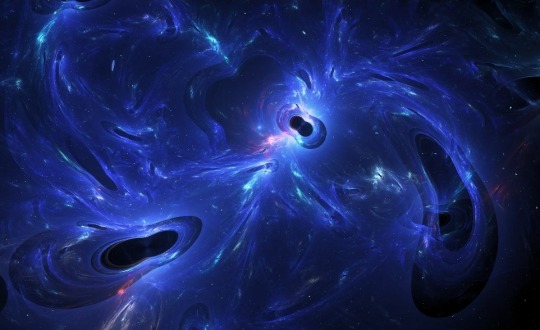
The result is a perfect balance of inward pull and outward radiation.
Our sun, for example, has reached that perfect equilibrium, parlaying gravitational pressure into the giant battery that essentially powers the solar system.
Dark stars, on the other hand, do things a little differently.
Sure, they've got hydrogen and helium running in their veins — but also, a touch of dark matter.

Yes, that's another material that no one has seen or even detected — making dark star theory even more ... theoretical.
But here's how Freese suggests it could work:
About 13 billion years ago, when dark stars were forming, the universe was a very different, and much denser, place. They likely incorporated dark matter in their DNA, in the form of Weakly Interacting Massive Particles, or WIMPs.
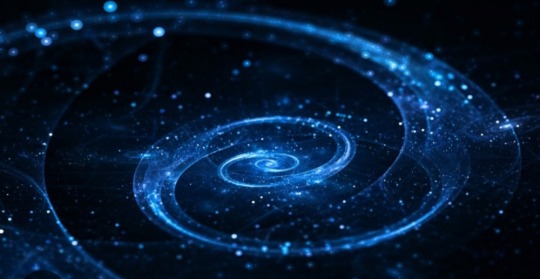
Even as a microscopic ingredient in a star's makeup, dark matter could keep a body huffing and puffing for a billion years thanks to a unique process called dark matter annihilation.
Essentially, dark matter gives a dark star its superpowers — it could expand and radiate energy without having to rely on that delicate dance known as nuclear fusion.

That would also unburden a dark star from its core, allowing it to sprawl outward and, despite its name, shine much brighter and bigger.
"They can keep growing as long as there is dark matter fuel," Freese tells Astronomy. "We've assumed they can get up to 10 million times the mass of the Sun and 10 billion times as bright as the Sun, but we don't really know. There is no cutoff in principle."
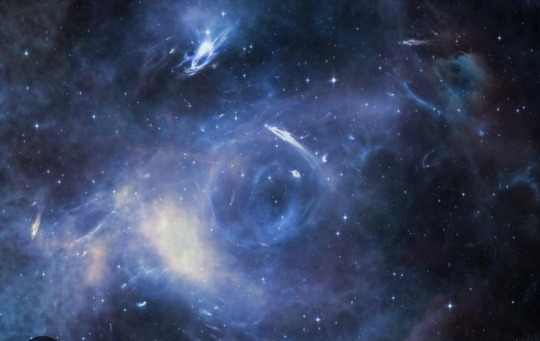
And, she suggests, at some point, a star with that much mass would have to collapse, becoming a black hole.
But how does a theory that hinges on theory ever end up becoming a reality? We just have to spot one on the endless haystack that is the cosmos.
And that may be a job for the James Webb Space Telescope.
Originally published on www.treehugger.com
COMING UP!!
(Wednesday, December 20th, 2023)
"CAN A BLACKHOLE CREATE A STAR??"
235 notes
·
View notes
